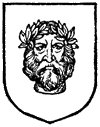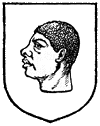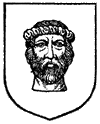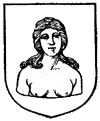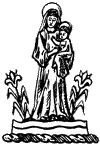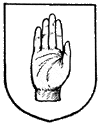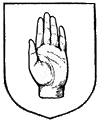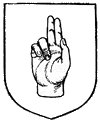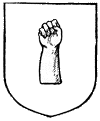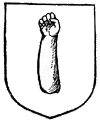| ND Home > ND Libraries > Spec. Coll. > Digital > Heraldry > Blazoning > Charges > Human Figure |
 |
|
Though found often as crests and supporters, the human figure simply used as a charge upon a shield is not often found. Instances of human figures that do occurr include Christ upon the cross and images of Saints. Representations of the Virgin Mary with Jesus are not as uncommon as other instances of human figures. Like birds and beasts, the position of the figure in a charge takes on different meanings and names.
|
a savage's head |
a blackamoor |
a Saracen's head |
a woman's |
the Virgin
Mary |
|
|
|
|
|
|
|
|
||||
|
When shown bare, the arm is blazoned as proper, while a clothed arm is termed either habited or vested. If the arm is clothed and the cuff is of a different color, it is blazoned as cuffed. The hand is usually either tan or peach — any other color is blazoned as gloved. When a hand or arm is shown in armor it is assumed to be plate, unless specified as chain or scale. If the armor is decorated with gold it is said to be garnished or. |
||||
|
|
|
|
|
|
|
|
|
|
|
|
| an arm embowed | an arm embowed to the dexter |
an arm embowed fessways |
a cubit arm habited | |
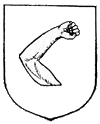 |
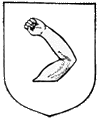 |
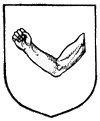 |
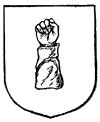 |
|
an arm embowed the upper part in fess |
two arms counter-embowed |
two arms counter-embowed and interlaced |
an
arm embowed in armor |
a cubit arm in armor, the hand in a gauntlet |
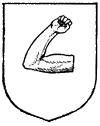 |
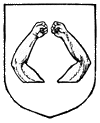 |
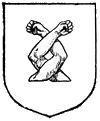 |
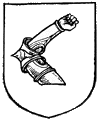 |
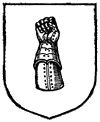 |

 |
|||
|
|
Copyright © 2005
| Dept. of Special Collections University of Notre Dame 102 Hesburgh Library Notre Dame, Indiana 46556 |
Telephone: 574-631-0290 Fax: 574-631-6308 E-mail the Department |
Page content last modified
07 July 2000 |
